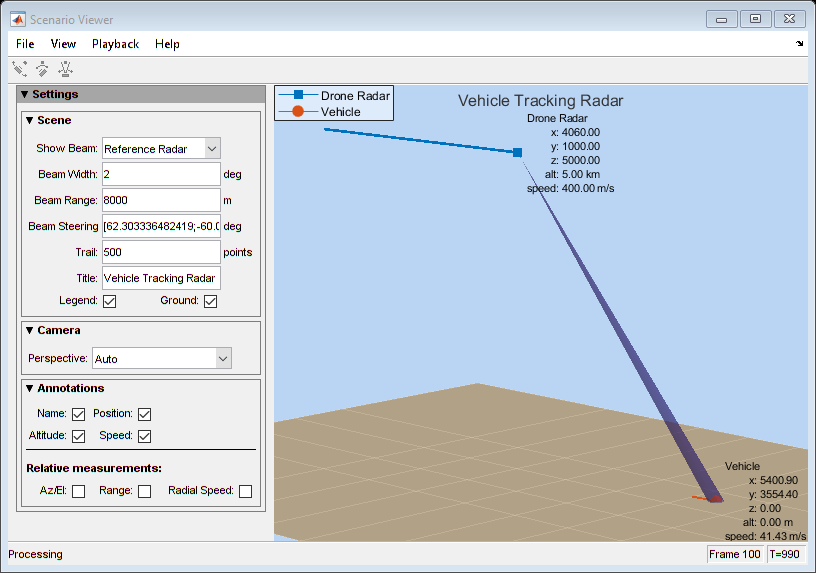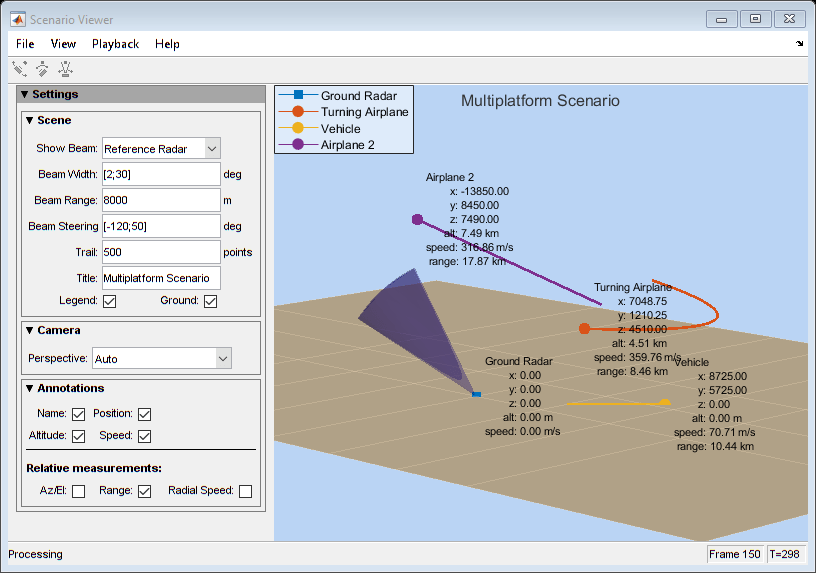step
System object: phased.ScenarioViewer
Namespace: phased
Update scenario viewer display
Syntax
Description
Note
Starting in R2016b, instead of using the step method to perform the operation defined by the System object™, you can call the object with arguments, as if it were a function. For example, y = step(obj,x) and y = obj(x) perform equivalent operations.
step(
also specifies the radar velocity, sSV,radar_pos,tgt_pos,radar_velocity,tgt_velocity)radar_velocity, and target
velocity, tgt_velocity. This syntax applies when
VelocityInputPort is set to true and
OrientationInputPort is set to
false.
step(
also specifies the radar orientation axes, sSV,radar_pos,radar_laxes,tgt_pos,tgt_laxes)radar_laxes, and the
target orientation axes, tgt_laxes. This syntax applies when
VelocityInputPort is set to false and
OrientationInputPort is set to
true.
step(
also specifies velocity and orientation axes when
sSV,radar_pos,radar_velocity,radar_laxes,tgt_pos,tgt_velocity,tgt_laxes)VelocityInputPort and
OrientationInputPort are set to
true.
Note
The object performs an initialization the first time the object is executed. This
initialization locks nontunable properties
and input specifications, such as dimensions, complexity, and data type of the input data.
If you change a nontunable property or an input specification, the System object issues an error. To change nontunable properties or inputs, you must first
call the release method to unlock the object.
Input Arguments
Examples
Version History
Introduced in R2016a


